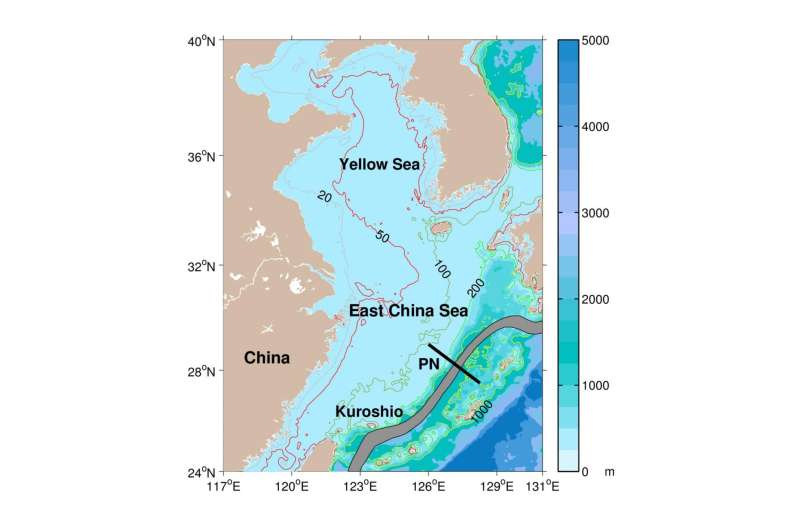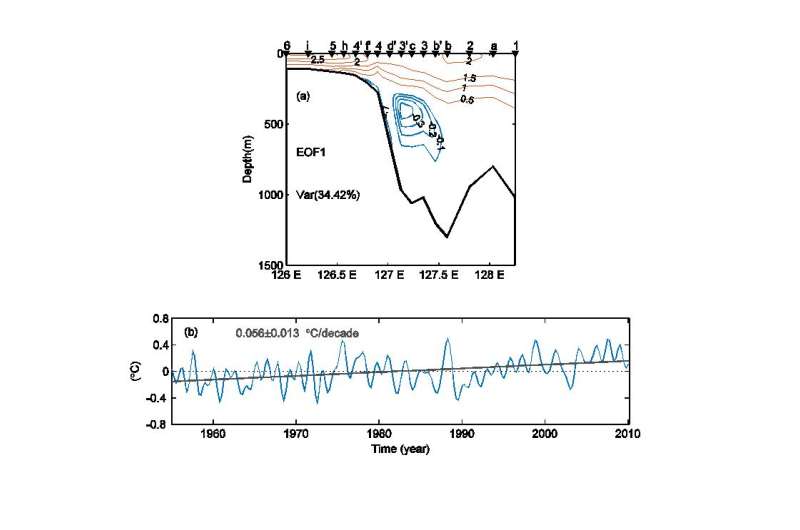Unravelling the mechanisms of SST warming in the Yellow Sea and East China Sea is still a challenge

The world's oceans are warming, and the marginal seas exhibit more notable warming than the open ocean due to their proximity to land and other unique regional factors. The Yellow Sea and East China Sea (YECS, Fig. 1) are marginal seas east of China, and have warmed steadily in the last century. In fact, the warming trend of the sea surface temperature (SST) in the YECS is more pronounced than the global mean state. The increasing SST can cause sea level rise, change ocean currents and atmospheric air flows, and affect ecosystem conditions.
Researchers exploring the underlying physical mechanisms have often been inhibited by the innumerable factors related to SST, while the corresponding records are limited to the temporal coverage and data quality. Therefore, the existing explanations of SST trend of the YECS are diverse.
For example, Dr. Liping Zhang from the Ocean University of China and her colleagues found that the increasing SST trend over the China marginal seas was accompanied by increased wind speed and enhanced heat loss (from ocean to atmosphere), which in turn acted to inhibit the warming rate [Zhang L., L. Wu, X. Lin, and D. Wu. Modes and mechanisms of sea surface temperature low-frequency variation over the coastal China seas. Journal of Geophysical Research, 2010, 115, C08031]; on the other hand, Professor Sang-Wook Yeh and his colleague from Hanyang University, Ansan, Republic of Korea, found the increasing SST trend in the YECS in winter was accompanied by weakened northerly winds over the YECS during winter, which helped increase SST through latent and sensible heat fluxes [Yeh Sang-Wook, and Cheol-Ho Kim. Recent warming in the Yellow/East Sea during winter and the associated atmospheric circulation. Continental Shelf Research, 2010, 30: 1428-1434]. These opposing findings show the need for further investigation.
Studies on regional atmospheric and oceanic environment reveal that the SST warming trend in YECS is accompanied with atmospheric and oceanic changes and influenced by them, according to Hailun He, a scientist at the Second Institute of Oceanography of State Oceanic Administration, in the Chinese city of Hangzhou.
In an article coauthored with Yuhua Pei and Xiaohui Xiu, colleagues at the same institute, the researchers sought possible factors that affect the increasing SST trend in the YECS by analyzing associated new data products. These data include the surface net heat flux, surface wind, temperature, geostrophic current velocity at a section transecting the Kuroshio (PN section), and air temperature in Japan. "These data can be used to depict some major influencing factors, both from the atmosphere and ocean. These analyses provide evidence for critical consideration of the mechanisms for increasing SST in the YECS," the authors write.

The warming is not limited in SST. The researchers write, "The warming rate in the specific section decreases steadily with depth and turns to a cooling trend in the intermediate layer, which results in an increase in stratification, and facilitates SST warming." (Fig. 2)
The study, published in the Science China Earth Sciences, further reports that the low-frequency trend in the air-sea flux is insufficient to explain the SST warming trend. "Accompanying the increasing YECS SST, there is a decreasing surface heat flux (downward positive), as indicated from the 'OAFlux' product, which can inhibit the SST increase. Therefore, SST warming seems to be induced from the oceanic thermal advection but not direct surface forcing."
However, ocean thermal advection cannot be measured directly and its effect cannot be evaluated from current observational data. "It is a big challenge to adequately evaluate the contribution from thermal advection on the SST warming," says Dr. Hailun He, the corresponding author of the research.
"Changes in surface wind can affect SST warming through the turbulent heat flux, downward/upward airflow, and upwelling/downwelling in the ocean. However, these trends are quite small and have large uncertainties, so their effect on SST warming is uncertain," the researchers write. "In this study, associated up-to-date data products are analyzed to provide evidence for critical consideration of the mechanisms for increasing SST in the YECS." The results provide valuable reference for the regional climate change in YECS.
However, the researchers also say it was challenging to draw firm conclusions on the dominant mechanism of SST warming in the YECS. They write, "In the future, climate models that can correctly simulate the western boundary currents and assimilate historical observations would be helpful in solving this problem."
More information: YuHua Pei et al, Interpreting the sea surface temperature warming trend in the Yellow Sea and East China Sea, Science China Earth Sciences (2017). DOI: 10.1007/s11430-017-9054-5
Journal information: Journal of Geophysical Research , Science China Earth Sciences
Provided by Science China Press




















